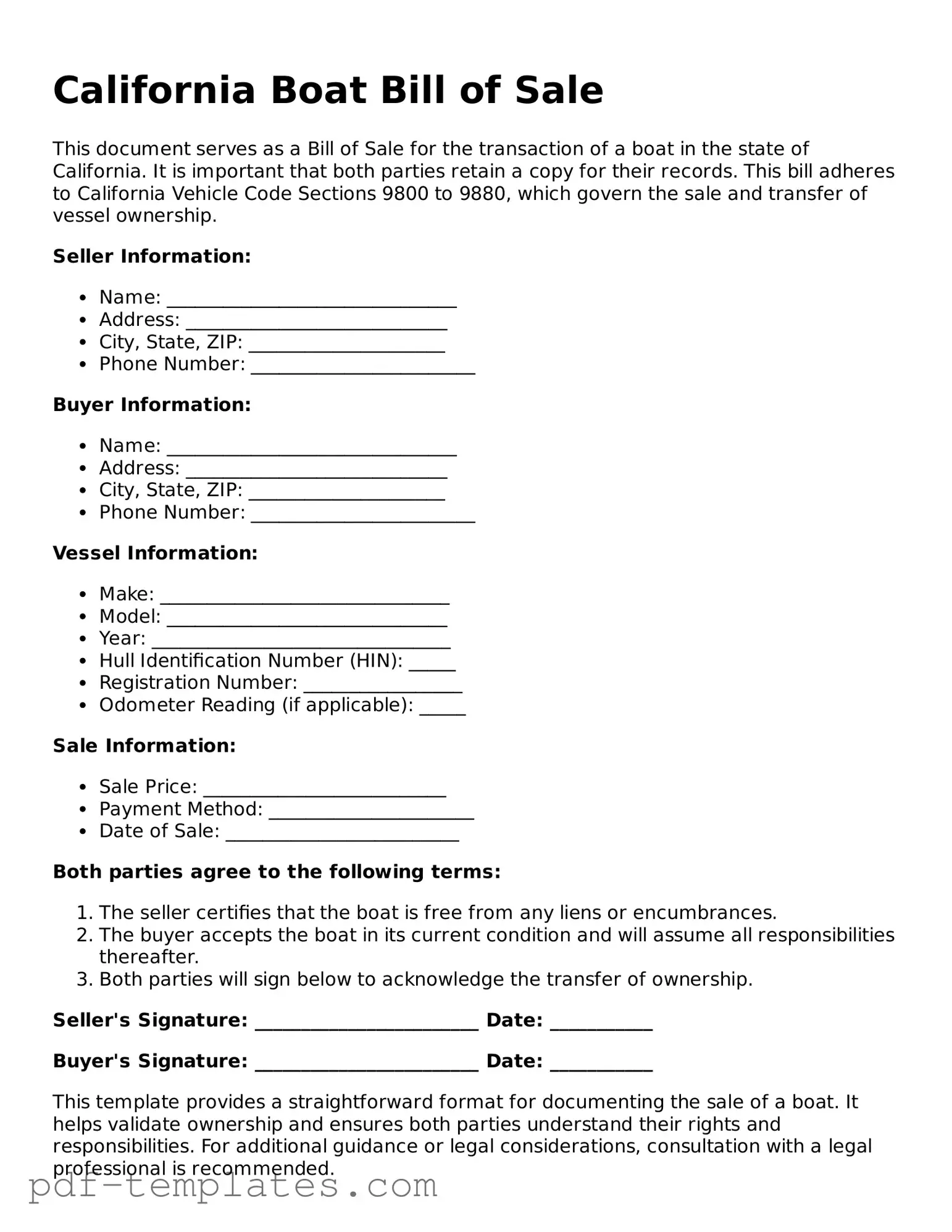The California Vehicle Bill of Sale is similar to the Boat Bill of Sale in that both documents serve as proof of transfer of ownership. When a vehicle is sold, the seller provides a bill of sale to the buyer, detailing the sale price, vehicle identification number (VIN), and other pertinent information. This document protects both parties by documenting the transaction and can be used for registration purposes. Just like the Boat Bill of Sale, it helps ensure that the buyer has legal ownership of the vehicle after the sale is completed.
The California Firearm Bill of Sale also shares similarities with the Boat Bill of Sale. Both documents are used to record the sale of a specific item, ensuring that ownership is transferred legally. The Firearm Bill of Sale includes details such as the make, model, and serial number of the firearm, as well as the names and signatures of both the buyer and seller. This form serves to protect both parties and provides a record of the transaction, similar to how the Boat Bill of Sale functions for watercraft.
The California ATV Bill of Sale is another document that parallels the Boat Bill of Sale. Both forms are essential for transferring ownership of off-road vehicles and boats, respectively. The ATV Bill of Sale includes information about the vehicle, such as its identification number and description, along with the sale price and buyer/seller details. This document ensures that the buyer can register the ATV and establishes legal ownership, just as the Boat Bill of Sale does for boats.
The California Motorcycle Bill of Sale is akin to the Boat Bill of Sale in that both are used to facilitate the transfer of ownership for specific types of vehicles. The Motorcycle Bill of Sale contains essential information, including the motorcycle's VIN, make, model, and the sale price. This document serves as a record of the transaction, protecting both the buyer and seller by providing proof of ownership change, similar to the function of the Boat Bill of Sale.
The California Trailer Bill of Sale shares characteristics with the Boat Bill of Sale as well. Both documents are designed to record the sale of a vehicle that is not driven on the road. The Trailer Bill of Sale includes details such as the trailer's identification number, description, and sale price. This document ensures that the ownership is transferred legally and provides necessary information for registration, paralleling the purpose of the Boat Bill of Sale for boats.
Lastly, the California Mobile Home Bill of Sale is similar to the Boat Bill of Sale in that both documents are used to transfer ownership of larger items that require registration. The Mobile Home Bill of Sale includes the mobile home’s identification number, description, and sale price, along with the buyer and seller's information. This document serves to formalize the transaction and protect both parties, much like the Boat Bill of Sale does for watercraft sales.
